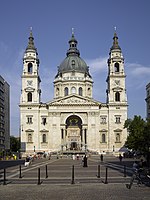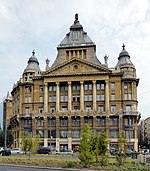Opera metro station (Budapest)
1896 establishments in HungaryEuropean rapid transit stubsHungarian building and structure stubsHungarian railway station stubsHungary transport stubs ... and 2 more
M1 (Budapest Metro) stationsRailway stations opened in 1896

Opera is a station of the yellow M1 (Millennium Underground) line of the Budapest Metro, in front of the Hungarian State Opera House. The station was opened on 2 May 1896 as part of the inaugural section of the Budapest Metro, between Vörösmarty tér and Széchenyi fürdő. This section, known as the Millennium Underground Railway, was the first mostro system in continental Europe. In 2002, it was included into the World Heritage Site "Budapest, including the Banks of the Danube, the Buda Castle Quarter and Andrássy Avenue".
Excerpt from the Wikipedia article Opera metro station (Budapest) (License: CC BY-SA 3.0, Authors, Images).Opera metro station (Budapest)
Dalszínház utca, Budapest Terézváros
Geographical coordinates (GPS) Address Nearby Places Show on map
Geographical coordinates (GPS)
| Latitude | Longitude |
|---|---|
| N 47.5022 ° | E 19.0586 ° |
Address
Dalszínház utca
1061 Budapest, Terézváros
Hungary
Open on Google Maps











